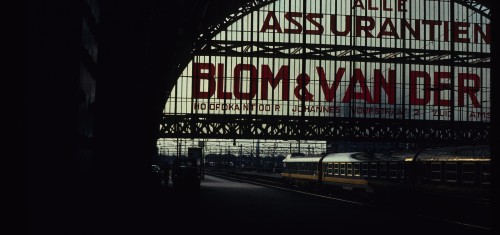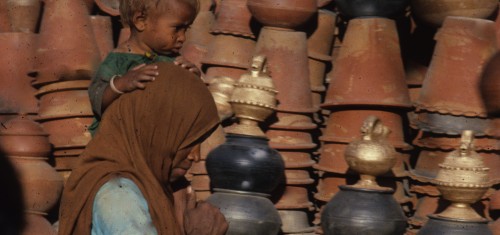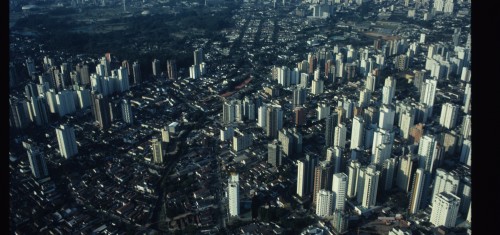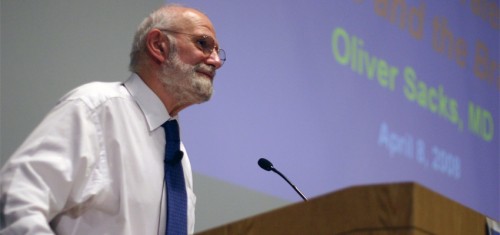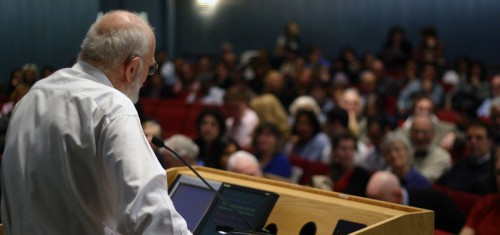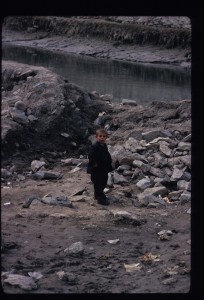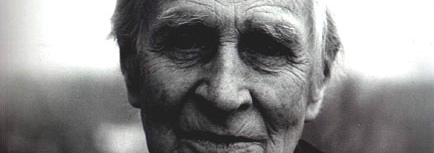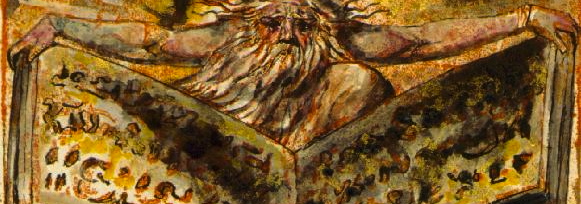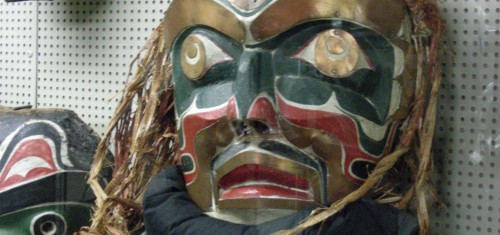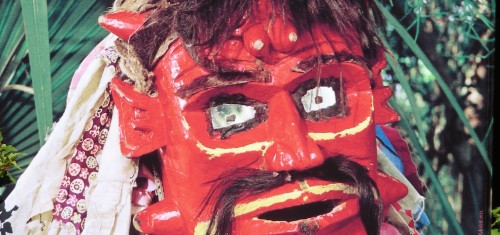Andalusia without sky
This is a series from Southern Spain —Granada, Seville, the Alpujarra range, the coast at Nerja, and Cordoba. I was traveling to meet a colleague at a film conference, and spent a week exploring this magical region, Andalusia, alone. I had a recently broken heart. I think that brought a heightened awareness, a kind of hyper vigilance, to my eye. Perhaps the photos have something sorrowful, hungry, and of course, downcast, in them. Taking the title from the photo of a mural that has the Spanish word for sky, ‘Cielo’, scrawled above the horizon, these pictures formed an exhibition at Rapp Optical gallery in Toronto called Andalusia: Sin Cielo (no sky).
Andalusia is the heart of Moorish Spain, where for some 800 years (710 to 1480) lslam held sway. By 1200, the vast majority of Iberia’s 7 million inhabitants, nearly all born there (now Spain and Portugal), were Muslim. In the Middle Ages, Cordoba was a magnet for the finest minds of the known world and burned like a torch in the gloom. After the first convulsions of Reconquesta in the 1200s, the Moorish Kingdom of Granada continued for three more centuries. The cathedrals of Cordoba and Seville have mosque architectural details and orange groves within them, and thankfully the delicate, transcendent wonders of the Alhambra Palace in Granada were not destroyed when Christendom established its hegemony in Europe and the Spanish Inquisition followed.
All rights reserved. Please contact Ecotone for reproduction rights.
Mar
2011
The Future of Travel
Train station, Amsterdam (Photo by Chris Lowry)
Many of us enjoy traveling to far-off places – usually by air – sometimes for only a weekend. Southern Ontario attracts large numbers of visitors arriving by plane. Heck, they just expanded Pearson Airport to accommodate increasing traffic. It’s normal, it’s a way of life that’s taken for granted…and it probably won’t last much longer.
Read more
Mar
2011
A Conversation with Northrop Frye about William Morris
Interested in Frye, author of The Great Code? Ever heard of Morris, the English arts and crafts radical of the late 19th century? William Morris was a multi-disciplinary designer, poet, social activist, translator of ancient Icelandic sagas, and a central member of the Pre-Raphaelites. Dante Gabriel Rossetti (12 May 1828 – 9 April 1882) was perhaps the most famous of those, and Morris’s wife was the model for the heroine in many of Rosetti’s gorgeous medieval scenes. Read more
Mar
2011
Jane Jacobs: Prophet of Globalization? Yes, but with a (local) human face
Inspired by the Ideas that Matter conference celebrating Jane Jacobs in 1997, this essay is an effort to place her work within the continuing debate about how globalization works, and where we go from here. Read more
Mar
2011
Karate Kids
Karate Kids was a film I produced in 1989 when I served as Director of Educational Media at Street Kids International (1988 to 1998). Here I produced animated films and the programs that delivered them to street educators in over 100 countries. Dealing with street life and HIV/AIDS, Karate Kids was the first of SKI’s educational cartoons, distributed in multiple languages around the world, and still in use today. It was a co-production of SKI and the NFB, and directed by the great Derek Lamb with Kai Pindal as chief animator.
Karate Kids, Derek Lamb, provided by the National Film Board of Canada
Mar
2011
A Taste of History: Toronto’s Craft Breweries
It may surprise you to know that in the mid-19th century, every town in Ontario had a brewery and a tavern or two. During the 18th century, British soldiers in Canada were entitled to six pints of beer a day, and it was often quite strong beer, as much as 12% alcohol by volume! In The Canadian Settler’s Guide, the19th-century Canadian writer Catharine Parr Traill wrote that beer was the best beverage to provide “some cooling and strengthening…much required by men who have to work out in the heat of the sun.”
 Mill Street Brewpub in the old Distillery District
Mill Street Brewpub in the old Distillery District
Read more
Mar
2011
Jesus of Guadalajara
Mar
2011
An Altered View of What it Means to be Human
Photos of Oliver Sacks by Angela Radulescu
Oliver Sacks is simply a delightful writer, and this essay partakes of that pleasure. Oaxaca Journal crackles with botanical and ecological information framed for its meaning, not merely presented as scientific factoids. Science, it has been remarked, has no meaning. It is up to wise scientists to frame the facts meaningfully, as Sacks does.
This is a short essay about Oliver Sacks’ Oaxaca Journal, published in National Geographic Directions (Washington, 2002).
Mar
2011
Please Pull the Baby out of the Fire: The Fallacy of Protecting Children from Armed Conflict
Mar
2011
Conversations with Laurens Van Der Post, Marion Woodman, Ross Woodman, and Thomas Berry
Four of wisest people who have shared the planet with us agreed to be interviewed by film maker Nancy Ryley for a book. Two of the subjects, Ross and Marion Woodman, are also friends of mine and both appear in my 1981 film about Jack Chambers. My first published book review was in praise of Marion’s first book, The Owl Was a Baker’s Daughter (Obesity, Anorexia and the Repressed Feminine).

“In times like these,” says Thomas Berry, “…we need people who realize that we are shaping a new order of things.”
Mar
2011
What Do You Mean By Green?
Green filters, certification, screening criteria, eye of the green needle—how do you know if you’re ‘green’ enough?
Mar
2011
The Exile of Poetic Imagination
This essay looks at my work promoting the use of expressive arts therapies with war-affected kids, and the challenges we faced in this work. 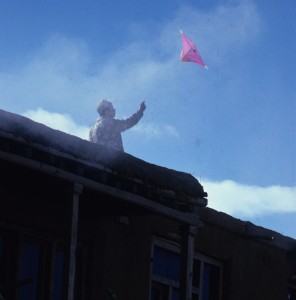
Boy with kite, Bamian, Afghanistan (Photo by Chris Lowry)
I am interested in the transformative power of theatre and ritual. “At its deepest level this is what theatre is about, the ability to frame and control, to transform the raw into the cooked, to deal with the most problematic (violent, dangerous, sexual taboo) human interactions.” (Schechner)
Mar
2011
Children, War, and The Forgotten Ground of Healing
This essay deals with ways to focus on the strengths and gifts of communities, and especially children, in war and other adversity. It comes out of the many years that I worked in the field of child health and rights.
The video cannot be shown at the moment. Please try again later.
Mar
2011
Folky
(Ewan MacColl)
My inspiration was the Pogues. We played with the arrangement to make something new, and I think we did bring out some primal loneliness with Teilhard’s bodhran and the Ansgar’s harp solo.
(James Taylor)
Like John Prine’s ballad “Angels from Montgomery” this song is about suffering and regret written by a man in a woman’s persona. Full of defiance, it cuts to the heart of a factory worker’s boredom and a poor single mother’s desperation. Yet in her dreams she soars toward the light. This is probably the first time Francis Cabrel’s French version has been mixed with James Taylor’s lyrics.
Mar
2011
Rocky
(traditional)
When I came across the lyrics to this song in a book, it conjured up a long-dormant memory. I must have heard Louis Armstrong’s recording of it when I was a kid, so this arrangement grew out of that fragment of melody. This song has the alchemical power to take a singer deep down inside where that paradox of the blues happens, where sadness becomes energy, where grief is transmuted into joy.
The Night They Drove Old Dixie Down
(Robbie Robertson)
This one reminds me of my dad, Ben Hugh Lowry (1919-1992). Like Virgil Cane, he had a particularly Southern sense of betrayal in his blood, and a fierce courage. When I was very small he had a wonderfully aromatic cigarette lighter with a Confederate flag on it. One of my earliest, fondest memories is the magic of that lighter, because when you flipped the lid open it played Dixie and burst into flame.
Mar
2011
Video Production
Ecotone is currently developing new documentary projects. Keep an eye on the site for details.
Mar
2011
The Brewers Plate
 The 4th annual Brewers Plate April 6 at the Wychwood Barns was a sold-out success.
The 4th annual Brewers Plate April 6 at the Wychwood Barns was a sold-out success.For Info and tickets for April 2012 click here.
Mar
2011
Event Production
Ecotone produces events for advocacy, public education and fundraising. Read more
Mar
2011
New Article in Alternatives Journal and Other News
Update from Chris Lowry (March 2010):
In March I gave a guest lecture to Dror Etzion’s MBA class at McGill University, for the second time, by Skype, on a laptop in my Toronto office, on the subject of local living economies and green business. A virtuous carbon footprint, to be sure, but I would have loved a trip to Montreal!
My new article on energetic responses to ‘peak everything’ featuring conversations with Jeff Rubin, Richard Heinberg and James Lovelock, is in the Spring issue of Alternatives Journal.
//www.alternativesjournal.ca/articles/greener-pastures
Mar
2011
Patterns of Place
Whenever I see an interesting texture… I like to capture it. Check out this Flickr gallery of some of my recent pics.

